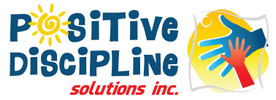Helping Children Develop a Strong Locus of Control (Encouraging Children to More Positive Behaviour – Step 6)
Between the ages of 1 and 3, children start their journey towards independence and personal power. This is a normal and healthy stage in their development.
While children require a great deal of guidance, it’s important to respect and support this increasing need for independence and personal power. When children are supported in these areas they become more confident and secure in their ability to cope and survive in the world. Another way to say this is they develop a feeling of “being capable”.
This sense of personal power and feeling capable is directly tied to whether or not a child develops a strong inner locus of control or outer locus of control. Research points to the fact that children who have a stronger inner locus of control do better academically and in the more long term, research shows that people who have a strong inner locus of control live more successful and happy lives.
But what is meant by locus of control?
Simply put, if a person has a strong inner locus of control they believe that they have the power to make choices and control the outcomes of their life – their own success or failure. A person with a strong outer locus of control believes that external forces (people, circumstances) have power over their life.
When we try to control children, we contribute to them developing an outer locus of control. Of course, we need to provide children with structure and guidance. But within that structure and those guidelines we can still leave space for the development of an inner locus of control.
The following is one way that we can do exactly that — provide guidance and structure while contributing to the development of a child’s inner locus of control AND invite cooperation from the child because it gives them some personal power.
The magic tool? Give children limited choices.
Now – before you say – “oh, I’ve given my children choices and it doesn’t work” or “My child just says – I don’t want to do either – or comes up with something that is totally unacceptable” – hear me out! You need to add two key words to the choice. “You decide.”
Give the child two choices (you can live with) and then add “You decide”. This turns the locus of control over to the child.
For example – your child doesn’t want to brush their teeth. Give the child the choice of “Would you rather brush your teeth before you put your pyjamas on or after you put your pyjamas on? You decide.” The expectations (structure) have been set – but the child has some personal power and choice in the matter. The locus of control has been handed from you to him/her.
Key here is how you say it. You’ll get back what you give. If you say it in truly an empowering way, it will invite cooperation. If you say it in a snarky way it will invite defiance. (This is because of mirror neurons in our brain. We’ll talk about that in a later post.)
The pictures here depict the different responses that a child will have based on whether they are responding to a “command” or whether they are “being handed the locus of control – in this case choice”. 
In my next post, I’ll give you another tool that involves turning the locus of control over to the child and in turn invites cooperation.
